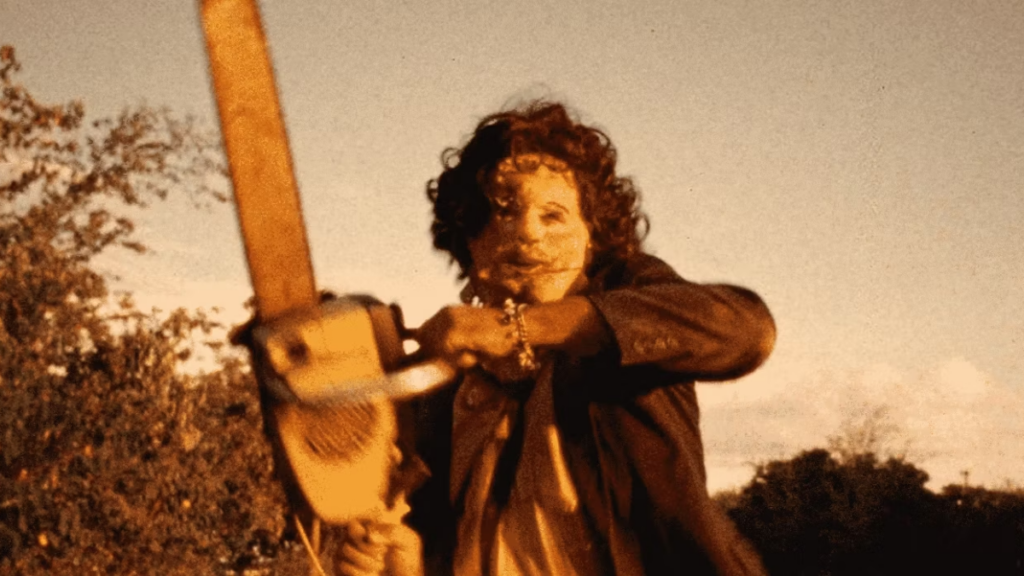How can it be that a lifelong horror enthusiast has never seen ‘The Texas Chain Saw Massacre’? This seems ironic, especially since I hold films like John Carpenter’s ‘Halloween’ and Wes Craven’s ‘A Nightmare on Elm Street’ among my all-time favourites. Released in 1974, ‘The Texas Chain Saw Massacre’ is often regarded as the film that established the slasher genre, setting the stage for the numerous films that would follow, featuring attractive teens facing off against brutal killers.
With the 50th anniversary of ‘The Texas Chain Saw Massacre’ upon us, I felt it was time to fill this significant gap in my horror knowledge. Although I was already aware of its shocking twists and had seen various clips, I wanted to see if this iconic film could live up to its reputation and impress me after decades of enjoying its successors. The answer was a resounding yes.
Image Courtesy: Collider
The plot centres on five teenagers—Sally Hardesty, her brother Franklin, and their friends—who embark on a road trip through Texas. Their journey leads them to a hitchhiker whose erratic behaviour raises alarms. After a tense encounter, they relax in an abandoned family home, unaware that nearby lives a family of killers. Leatherface, the film’s masked antagonist wielding a chainsaw, picks them off one by one.
Director Tobe Hooper’s film stands out for its eerie atmosphere, which is more aligned with modern independent horror than traditional suspense films. The unsettling tone is established with disorienting visuals, including decaying corpses illuminated by flashes of light, and a minimal soundtrack that enhances the film’s naturalistic dialogue and silence.
Image Courtesy: Collider
The film’s unconventional cinematography gives it a raw, home-video feel, allowing the characters’ dialogue and Leatherface’s brutality to unfold without relief. It explores themes of vulnerability and terror through its portrayal of the characters against a desolate Texas backdrop. While ‘The Texas Chain Saw Massacre’ runs for a brisk 83 minutes, the violence is executed matter-of-factly, relying on suggestion rather than graphic gore to create dread.
As the story progresses and Sally becomes the last surviving character, the tension escalates into an exhausting emotional ordeal, illustrating the psychological impact of her plight. Despite a few shortcomings in character development, the film succeeds in establishing a pervasive sense of fear and unease.
Image Courtesy: Collider
Ultimately, ‘The Texas Chain Saw Massacre’ leaves a lasting impression—not from overt horror but from the uncomfortable feelings it evokes. The film’s exploration of human vulnerability and the terror of unknown strangers is both simple and disturbingly relevant, ensuring its place as a cinematic masterpiece that continues to resonate decades later.
–Farheen Ali
